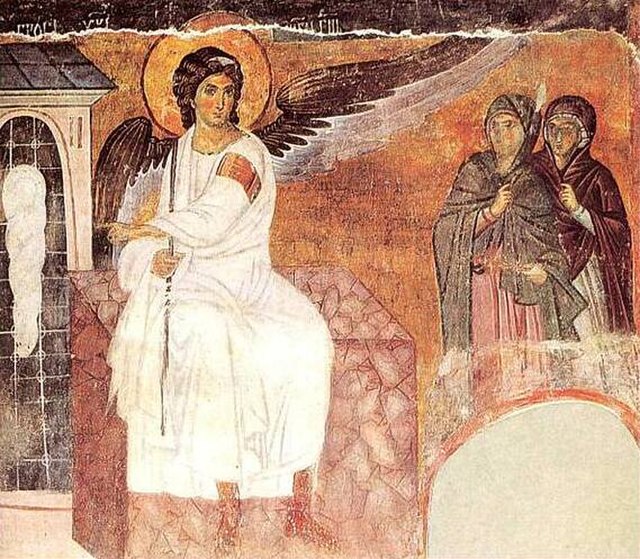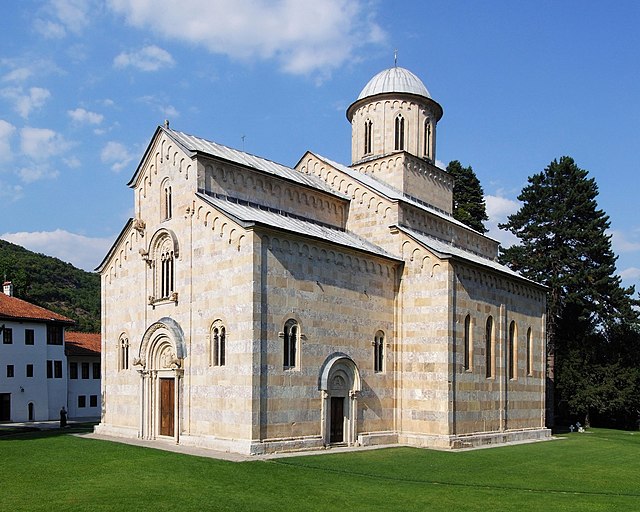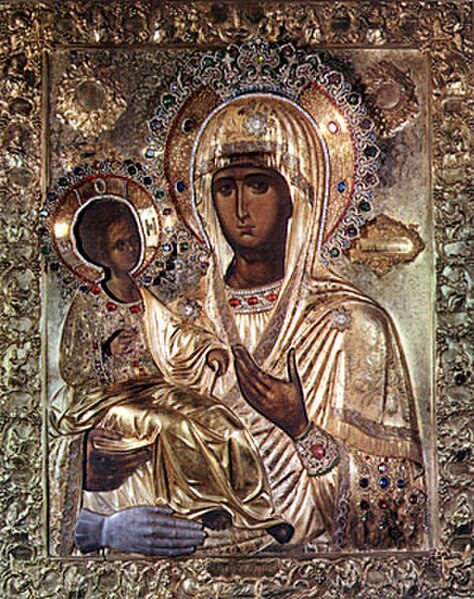Serbian art refers to the visual arts of the Serbs and their nation-state Serbia. The medieval heritage includes Byzantine art, preserved in architecture, frescos and icons of the many Serbian Orthodox monasteries. In the early modern period, Serbian visual arts began to be influenced by Western art, culminating in the Habsburg monarchy in the late 18th century. The beginning of modern Serbian art is placed in the 19th century. Many Serbian monuments and works of art have been lost forever due to various wars and peacetime marginalizations.
The White Angel fresco from Mileševa Monastery (1235)
Serbian Orthodox Monastery of Dečani, built in the 14th century, UNESCO World Heritage Site
Serbian silk, c. 1330
Bogorodica Trojeručica, the 14th century
The Studenica Monastery is a 12th-century Serbian Orthodox monastery situated 39 kilometres (24 mi) southwest of Kraljevo and 40.9 kilometres (25.4 mi) east of Ivanjica, in central Serbia. It is one of the largest and richest Serb Orthodox monasteries.
Exterior view of monastery
King Milutin with a model of King's Church, a fresco from King's Church.
Crucifixion, fresco from Church of the Holy Virgin, Monastery of Studenica, 1208. On the left is St. Mary the Holy Virgin.
Panorama picture of the Studenica (Church of the Virgin in the foreground)








